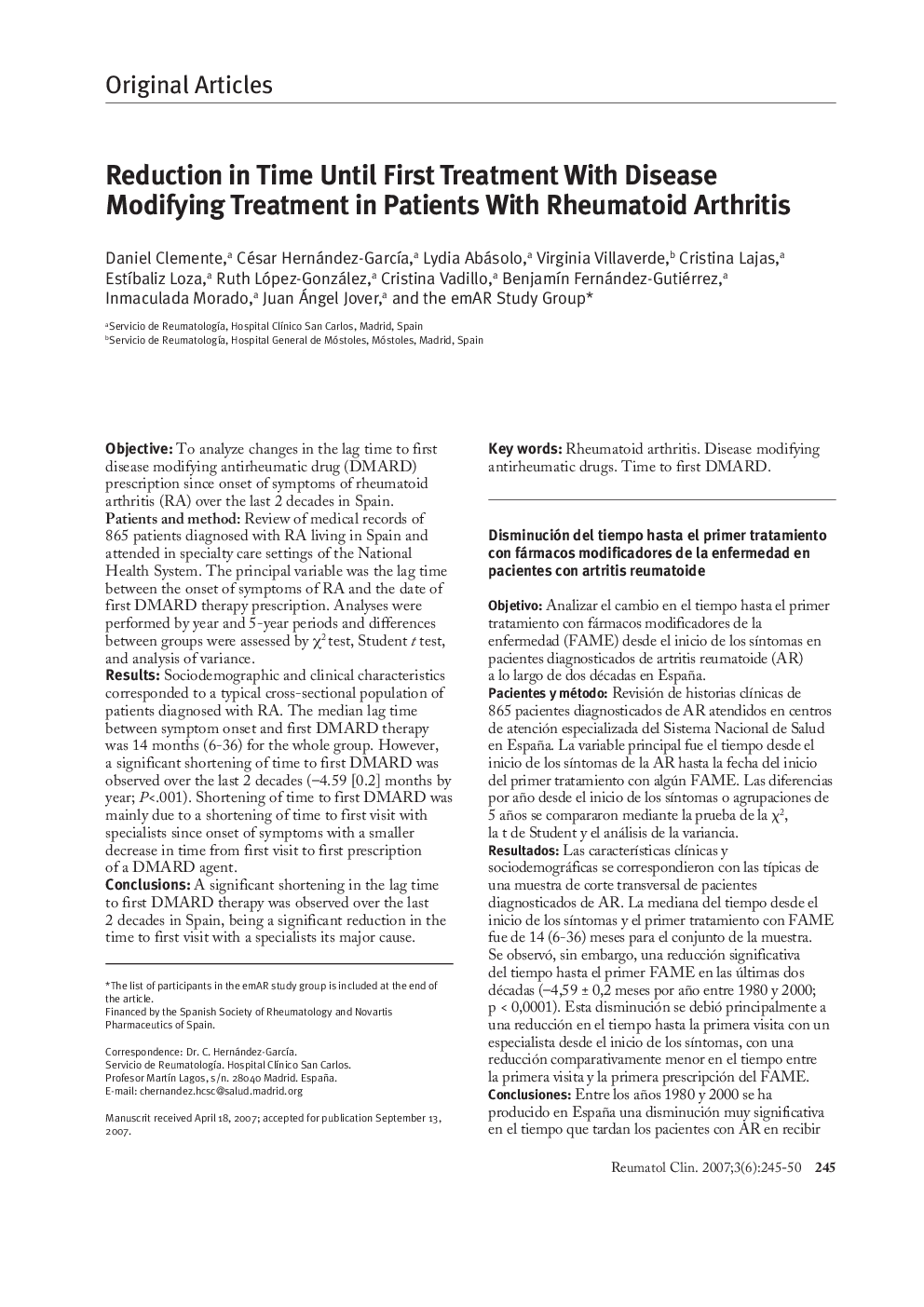| Article ID | Journal | Published Year | Pages | File Type |
|---|---|---|---|---|
| 3384891 | Reumatología Clínica (English Edition) | 2007 | 6 Pages |
ObjectiveTo analyze changes in the lag time to first disease modifying antirheumatic drug (DMARD) prescription since onset of symptoms of rheumatoid arthritis (RA) over the last 2 decades in Spain.Patients and methodReview of medical records of 865 patients diagnosed with RA living in Spain and attended in specialty care settings of the National Health System. The principal variable was the lag time between the onset of symptoms of RA and the date of first DMARD therapy prescription. Analyses were performed by year and 5-year periods and differences between groups were assessed by χ2 test, Student t test, and analysis of variance.ResultsSociodemographic and clinical characteristics corresponded to a typical cross-sectional population of patients diagnosed with RA. The median lag time between symptom onset and first DMARD therapy was 14 months (6–36) for the whole group. However, a significant shortening of time to first DMARD was observed over the last 2 decades (–4.59 [0.2] months by year; P <. 001). Shortening of time to first DMARD was mainly due to a shortening of time to first visit with specialists since onset of symptoms with a smaller decrease in time from first visit to first prescription of a DMARD agent.ConclusionsA significant shortening in the lag time to first DMARD therapy was observed over the last 2 decades in Spain, being a significant reduction in the time to first visit with a specialists its major cause.
ResumenObjetivoAnalizar el cambio en el tiempo hasta el primer tratamiento con fármacos modificadores de la enfermedad (FAME) desde el inicio de los síntomas en pacientes diagnosticados de artritis reumatoide (AR) a lo largo de dos décadas en España.Pacientes y métodoRevisión de historias clínicas de 865 pacientes diagnosticados de AR atendidos en centros de atención especializada del Sistema Nacional de Salud en España. La variable principal fue el tiempo desde el inicio de los síntomas de la AR hasta la fecha del inicio del primer tratamiento con algún FAME. Las diferencias por año desde el inicio de los síntomas o agrupaciones de 5 años se compararon mediante la prueba de la χ2, la t de Student y el análisis de la variancia.ResultadosLas características clínicas y sociodemográficas se correspondieron con las típicas de una muestra de corte transversal de pacientes diagnosticados de AR. La mediana del tiempo desde el inicio de los síntomas y el primer tratamiento con FAME fue de 14 (6–36) meses para el conjunto de la muestra. Se observó, sin embargo, una reducción significativa del tiempo hasta el primer FAME en las últimas dos décadas (–4,59 ± 0,2 meses por año entre 1980 y 2000; p < 0,0001). Esta disminución se debió principalmente a una reducción en el tiempo hasta la primera visita con un especialista desde el inicio de los síntomas, con una reducción comparativamente menor en el tiempo entre la primera visita y la primera prescripción del FAME.ConclusionesEntre los años 1980 y 2000 se ha producido en España una disminución muy significativa en el tiempo que tardan los pacientes con AR en recibir su primer FAME, motivada principalmente por una reducción en el tiempo de acceso al especialista que prescribe estos tratamientos.
